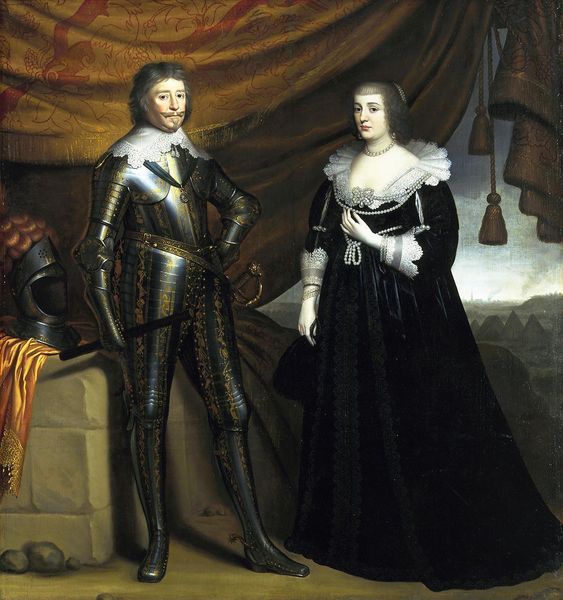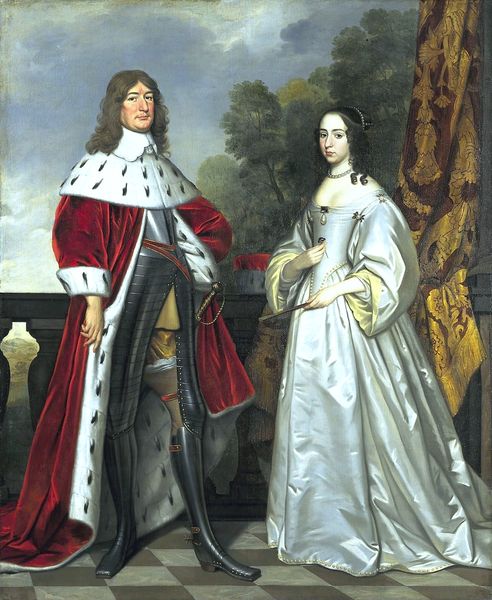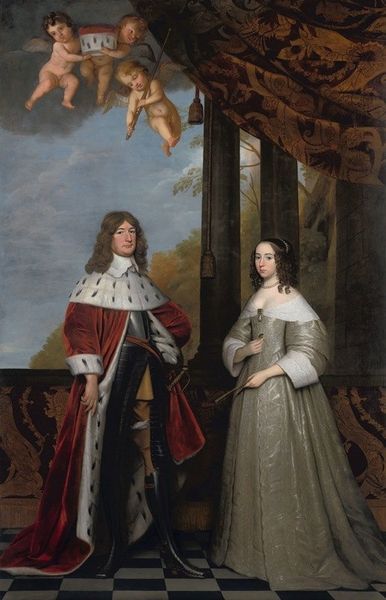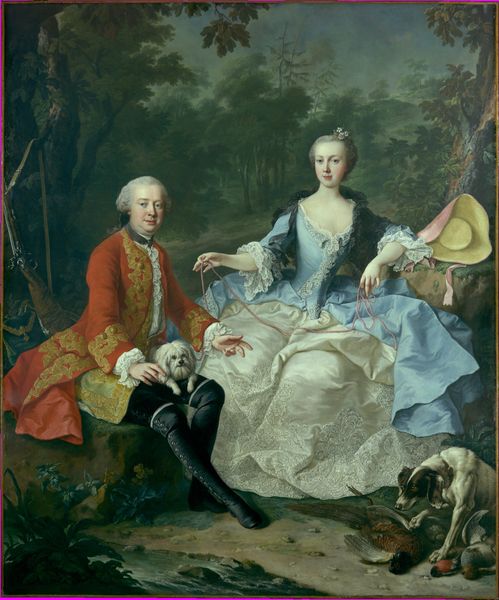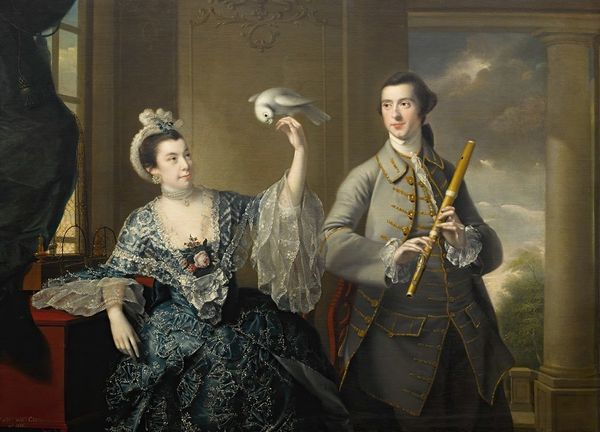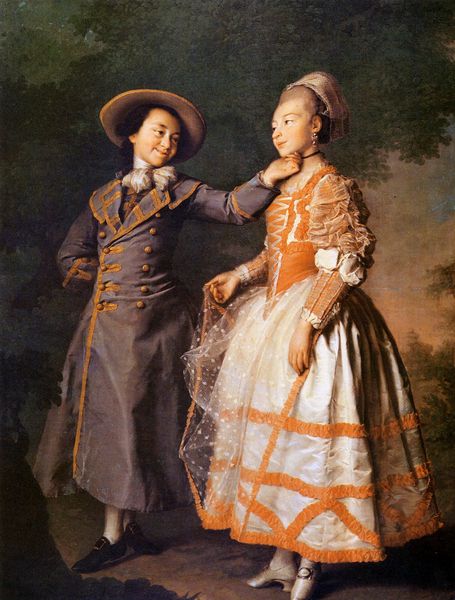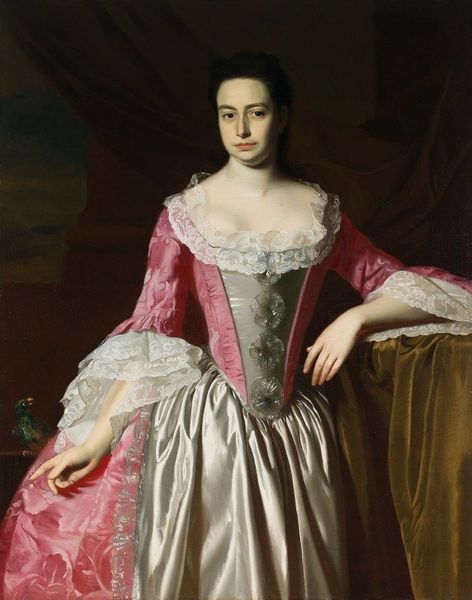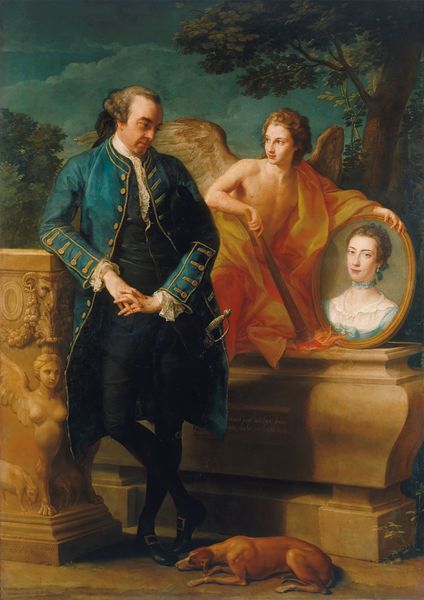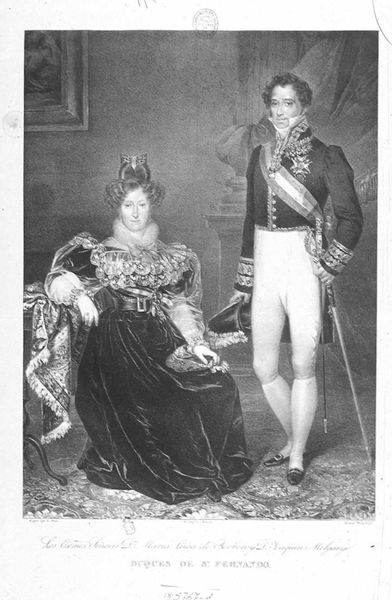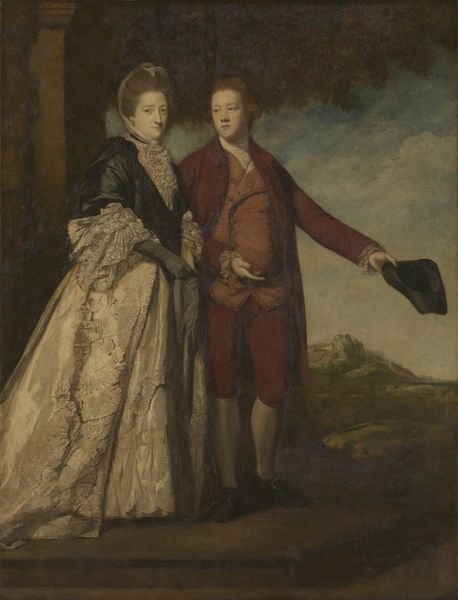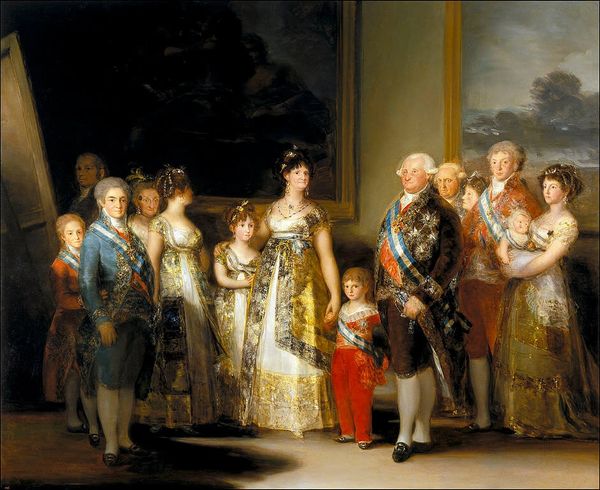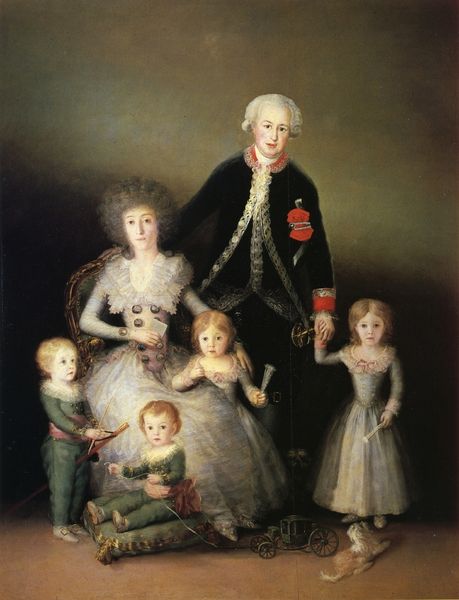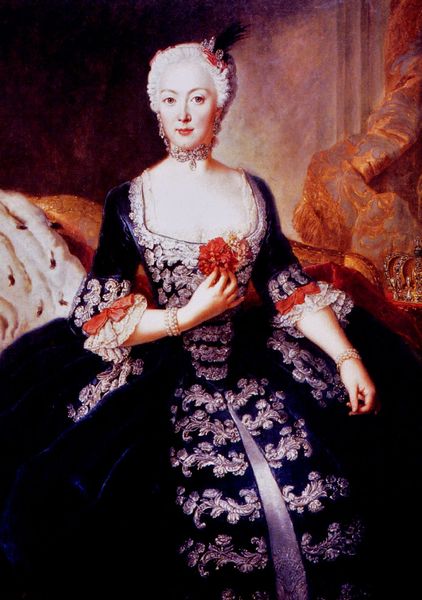
Princess Sophie Dorothea Marie with her husband, Frederick William, Margrave of Brandenburg Schwedt 1734
0:00
0:00
painting
#
portrait
#
baroque
#
painting
#
figuration
#
costume
#
genre-painting
#
academic-art
#
lady
Copyright: Public domain
Editor: Here we have Antoine Pesne's "Princess Sophie Dorothea Marie with her husband, Frederick William, Margrave of Brandenburg Schwedt," painted in 1734. What strikes me is the detailed rendering of their clothing. It really highlights their wealth. What draws your attention? Curator: Immediately, I see the material excess as a key indicator of power and status. Think about the sheer labor involved in producing those textiles, in applying those pigments. It's not just representation; it’s a display of productive forces and the resources at their disposal. Does that make you reconsider that initial impression? Editor: It does, especially that bit about "productive forces". Seeing all those layers of silk, the lace and the intricate patterns really gives you a different sense of it than just saying they’re “wealthy.” So, who made this fabric, where, and under what conditions? Was Pesne also commenting on the manufacture or commodification of these materials? Curator: Exactly! The very act of commissioning this painting is a statement about consumption, class, and access to artistic production. Think about the pigment: where did those colors come from? Who mined and processed them? These materials have a history and impact, and Pesne’s work becomes a document of those processes as much as a portrait. Editor: So, it's not enough to see it as simply a depiction of royalty; we must also acknowledge the material conditions that made it possible? Curator: Precisely. The artwork is evidence of social and economic relationships, extending far beyond the royal couple portrayed. Consider how this type of painting helped to solidify existing power dynamics by valorizing consumerism and material display. Editor: That’s fascinating. I hadn’t considered the labor involved at such a deep level. Now, I can appreciate the piece as less of an ode to royalty and more of a commentary on, perhaps, early consumer culture. Curator: Right! Hopefully it will give people pause to consider those power dynamics inherent in objects and the means of their production today.
Comments
No comments
Be the first to comment and join the conversation on the ultimate creative platform.
